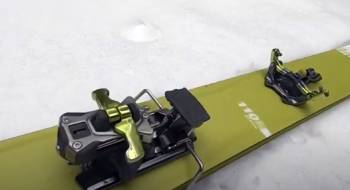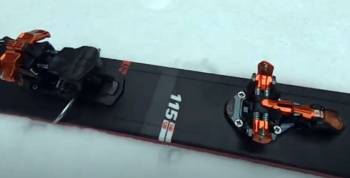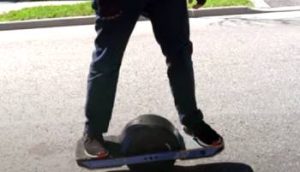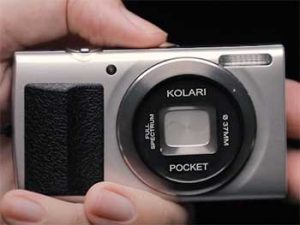Backcountry skiing and splitboarding have exploded in popularity over the past few years, and for a good reason. The combination of stunning mountain scenery, challenging terrain, and the chance to escape crowded ski resorts has proven irresistible to many. In this ever-growing market, two bindings have emerged as fierce competitors: the G3 ZED and the G3 ION.
Let’s dive into the world of backcountry bindings and examine the pros and cons of each in this epic showdown.
A Brief Comparison Table
| Feature | G3 ZED | G3 ION |
| Weight (per binding) | 345 grams | 585 grams |
| Brake Sizes | 100mm and 115mm | 85mm, 100mm, 115mm, 130mm |
| Adjustable Release | Yes | No |
| Boot Compatibility | Wide range | Wide range |
| Ease of Use | Moderate learning curve | Beginner-friendly |
| Durability | Good | Excellent |
| Customization Options | High | Limited |
The G3 ZED: A Lightweight Powerhouse
The G3 ZED is a backcountry binding that has been turning heads since its introduction. Designed for skiers who prioritize lightweight performance, the ZED has managed to shed grams without sacrificing strength.
Pros of the G3 ZED

- Lightweight Design
The ZED weighs in at a mere 345 grams per binding, making it one of the lightest options on the market. This reduced weight translates into less fatigue on long tours, allowing you to cover more ground and reach those far-off peaks.
- Adjustable Release Values
The ZED features adjustable release values (RVs) that can be customized to the skier’s weight, ability, and preferred skiing style. This means you can fine-tune the binding for optimal safety and performance.
- Boot Compatibility
The ZED is compatible with a wide range of touring boots, thanks to its adjustable toe piece and heel unit. This versatility means you can use the ZED with your favorite boots without any issues.
Read More: Difference Between Fenix E35 And PD35
Cons of the G3 ZED
- Limited Brake Options
The G3 ZED comes with brakes in just two sizes: 100mm and 115mm. If your skis fall outside of these widths, you may need to purchase additional brakes or consider another binding.
- Learning Curve
The ZED’s lightweight design and multiple adjustment options can be a bit overwhelming for first-time users. It may take a few outings to dial in your preferred settings and become comfortable with the binding.
The G3 ION: A Robust All-Rounder

The G3 ION is a versatile backcountry binding that balances weight, performance, and ease of use. It has become a favorite among backcountry enthusiasts for its reliability and user-friendly design.
Pros of the G3 ION
- Easy to Use
The ION’s simple design and intuitive features make it a breeze to use, even for those new to backcountry skiing. The step-in guidance and consistent release values help instill confidence in the backcountry.
- Wide Brake Options
The ION comes with a broader range of brake sizes (85mm, 100mm, 115mm, and 130mm), making it suitable for a variety of ski widths. This flexibility means you can easily switch between different skis without needing additional brakes.
- Durable Construction
The ION is built to withstand the rigors of backcountry skiing. Its robust construction and high-quality materials ensure that it will hold up season after season.
Cons of the G3 ION
- Heavier than the ZED
The ION weighs in at 585 grams per binding, making it significantly heavier than the ZED. While the difference may not seem significant, it can add up over long tours, leading to increased fatigue.
- Less Customizable
The ION lacks the same level of customization as the ZED, with fewer options for adjusting release values and boot compatibility. This may be a drawback for some skiers, although others may appreciate the simplicity.
Read More: Difference Between Stek DYNOmatt And XPEL Stealth Paint Protection Film
The Verdict: Which Binding Should You Choose?
Ultimately, the choice between the G3 ZED and ION comes down to personal preference and priorities. If you value lightweight performance and customization, the ZED may be the perfect fit for you. On the other hand, if you prioritize ease of use, durability, and a wider range of brake options, the ION could be your ideal binding.
Both bindings offer excellent performance and have their loyal fan bases. The best way to decide is to consider your specific needs and try both bindings on for size.
Frequently Asked Questions (FAQs)
Yes, both the ZED and ION use the same hole pattern, making it easy to swap bindings without re-drilling your skis.
While both bindings are compatible with a wide range of touring boots, it’s essential to double-check compatibility with your specific boots before purchasing.
Both bindings come with brakes, but the available sizes differ between the ZED and ION. Make sure to choose the appropriate brake size for your skis when purchasing.
The G3 ION is generally considered more beginner-friendly due to its ease of use and consistent release values. However, with proper instruction and practice, the ZED can also be suitable for newer backcountry skiers.
While both bindings are designed primarily for backcountry use, they can be used for occasional resort skiing. Keep in mind that they may not provide the same level of performance and safety features as dedicated alpine bindings.
G3 offers a one-year limited warranty on both the ZED and ION bindings, covering defects in materials and workmanship.
Wrapping Things Up
In conclusion, the G3 ZED and ION bindings both have their unique strengths and weaknesses, making them suitable for different types of backcountry skiers.
By weighing the pros and cons, considering your preferences, and trying them out for yourself, you can make an informed decision and find the perfect binding to elevate your backcountry experience.



